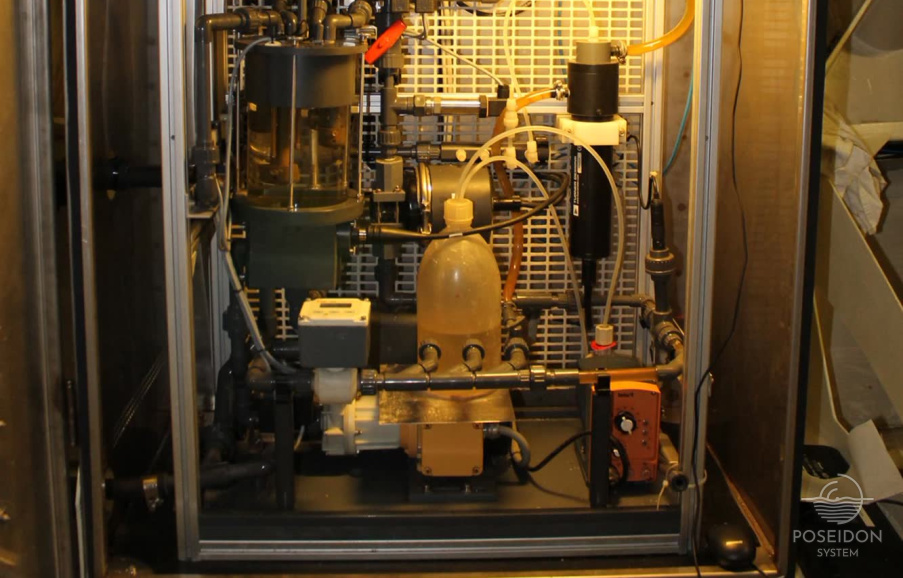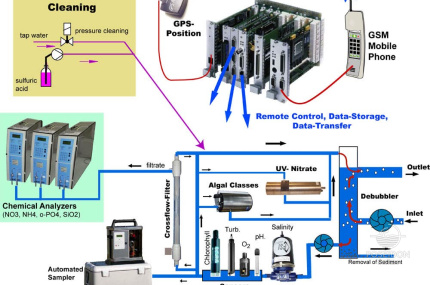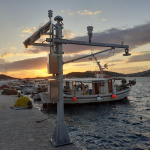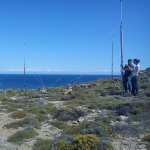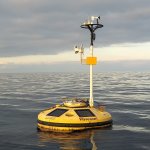Ferrybox
The potential of using a Ship of opportunity (SOOP) network is the collection of marine observational data over vast areas of the world’s oceans that could not reasonably be covered with traditional research vessel efforts. Modern SOOPs are able to host automated systems providing high frequency data in real time and sampling in predefined coordinates.
One of the most commonly approved and mature scientific infrastructures hosted in commercial ships are the FerryBoxes (FB). In general, all FB systems employ a similar design (Fig.1). There are differences in the design of the flow-through system, the degree of automation and biofouling prevention, as well as the possibilities of supervision and remote control. The system consists of a water inlet from where the water is pumped into the measuring circuit that contains multiple sensors. A basic system includes sensors for temperature, salinity, turbidity and chlorophyll-a fluorescence, and a GPS receiver for position control. Many systems also include an inline water sampler and additional sensors, e.g. for oxygen, pH, pCO2 or algal groups, as well as meteorological instruments (air pressure, air temperature and wind). In nowadays there are more than 20 FB systems operating in European waters.
The Poseidon FB is operating daily in the route between Herakleion and Piraeus. As the boat travels, the FerryBox monitors sea water temperature, salinity, dissolved oxygen concentration, turbidity, chlorophyll concentration and sea water alkalinity-pH. The data are transmitted real-time, using a GSM network, and stored at the POSEIDON operation center the scientific community with a useful research tool and users with a live image of the environmental conditions in the South Aegean Sea. The addition of Poseidon FB, unique in the eastern Mediterranean Sea, to the network upgrades the role of HCMR that currently, through POSEIDON, operates one of the most integrated networks for monitoring the marine environment in the European territory.



